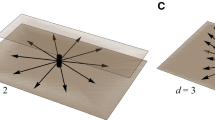Abstract
We have applied the Shockley-Read-Hall (SRH) model for the generation and recombination of charged carriers to biological ion channels. We show how to include this important effect in the traditional PNP model. The idea is to use the software of computational electronics that has been developed to solve Shockley’s equations. In particular we have used the simulator PROPHET to simulate biological ion channels and to include particle like properties and dynamics such as the capture and release of ions. The considerable reduction of effective diffusion coefficients can be well simulated. The saturation effect observed in current-concentration curves, which is not predicted by the conventional PNP model, has been successfully reproduced in our simulation. We also show that PROPHET can be used to perform both steady state and time dependent simulations for ion channels. The timescale can be microseconds, far beyond the range of molecular dynamics simulations. Our results demonstrate the useful role of PROPHET simulations in a multi-scale simulation approach.
Similar content being viewed by others
References
B. Hille, Ionic Channels of Excitable Membranes, 2nd ed. (Sinauer Associate Inc., Sunderland, MA, 1992).
R.S. Eisenberg, “From structure to function in open ionic channels,” J. Membr. Biol., 171, 1–24 (1999).
T.A. van der Straaten, J.M. Tang, U. Ravaioli, R.S. Eisenberg, and N.R. Aluru, “Simulating ion permeation through the ompF porin ion channel using three-dimensional drift-diffusion theory,” J. Comp. Elec., 2, 29–47 (2003).
K. Hess, Advanced Theory of Semiconductor Devices, (IEEE Press, New York, 2000).
We thank Professor Dutton and his group for introducing us to Prophet. More information can be found at http://www-tcad.stanford.edu/prophet/.
Y. Zhou, J.H. Morais-Cabral, A. Kaufman, and R. MacKinnon, “Chemistry of ion coordination and hydration revealed by a channel—Fab complex at 2.0 resoluation,” Nature, 414, 43–48 (2001).
S. Berneche and B. Roux, “Energetics of ion conduction throught the channel,” Nature, 414, 73–77 (2001).
W. Shockley and W.T. Read, “Statistics of the recombination of holes and electrons,” Phys. Rev., 87, 835 (1952).
D.P. Chen et al., “Calcium ion permeation through the calcium release channel (ryanodine receptor) of cardiac muscles,” J. Phys. Chem. B, 107, 9139–9145 (2003).
Author information
Authors and Affiliations
Rights and permissions
About this article
Cite this article
Hu, S., Hess, K. An Application of the Recombination and Generation Theory by Shockley, Read and Hall to Biological Ion Channels. J Comput Electron 4, 153–156 (2005). https://doi.org/10.1007/s10825-005-7128-3
Issue Date:
DOI: https://doi.org/10.1007/s10825-005-7128-3




